Create Materials
Create new materials and define their properties.
The materials available and their corresponding properties are based on the fatigue module that you select. If SN, FOS, or Weld is selected, materials with SN properties are listed. If EN is selected, materials with EN properties are listed.
Note: Unlike OptiStruct, materials in HyperLife are defined by stress amplitude by default.
-
From the Setup tools, click the
Material tool.

Figure 1.The Assign Material dialog opens. -
Create a new material with reference to an existing material.
- Click the Material DB tab.
-
Search the database for a material with properties that resemble your
desired material.
Use the search widgets to quickly find and filter options.
- Click Save as MyMaterial.
- Click the My Material tab.
- Edit the name of the newly created material and any relevant properties.
- Click Save.
-
Create a material from scratch.
- Click the My Material tab.
-
Click
 to create a new
material.
to create a new
material.
-
Edit the name and any relevant properties.
Note: Several input methods are available for fitting an SN curve based on the data provided.
- Click Save.
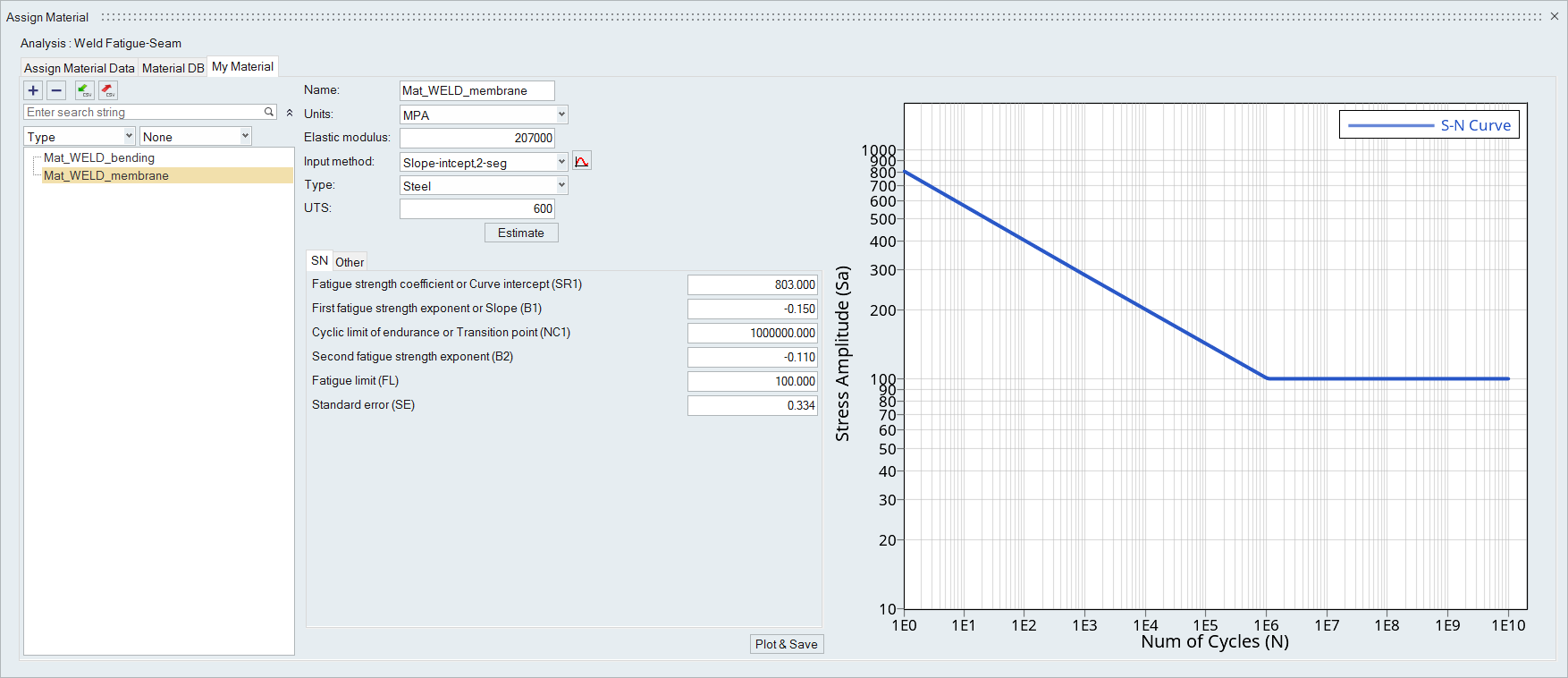
Figure 2.
Fit a Curve by Estimating UTS
An empirical formula can be used to estimate SN/EN data from ultimate tensile strength (UTS) and Young's modulus (E).
- From the Assign Material dialog, click the My Material tab and select your created material.
- Select Estimate from UTS as the input method.
- Enter a value for UTS and Elastic modulus.
- Click Estimate.
-
Click
 to view the model description.
to view the model description.
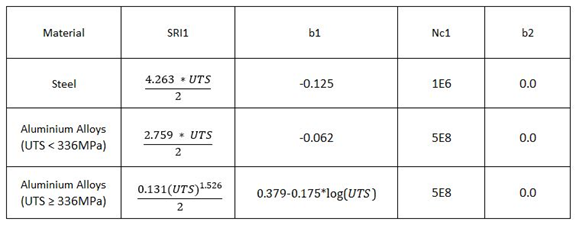
Figure 3. SN Method Description- Fatigue strength coefficient. It is the stress amplitude intercept of the SN curve at 1 cycle on a log-log scale.
- The first fatigue strength exponent. The slope of the first segment of the SN curve in log-log scale.
- In one-segment SN curve, this is the cycle limit of endurance (See Nc1 in Figure 4). In two-segment SN curve, this is the transition point (see Nc1 in Figure 6).
- The second fatigue strength exponent.
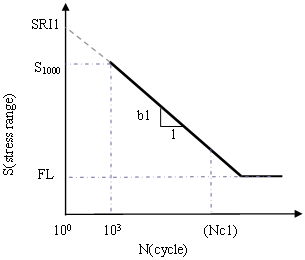
Figure 4. One-segment SN curve in log-log scale (b2=0) (Nc1 is not defined or less conservative than FL)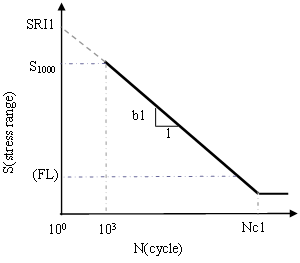
Figure 5. One-segment SN curve in log-log scale (b2=0) (FL is not defined or less conservative than Nc1)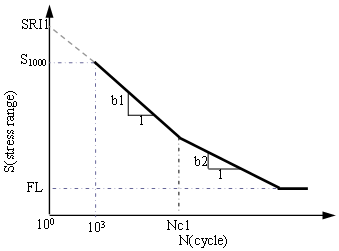
Figure 6. Two-segment SN curve in log-log scale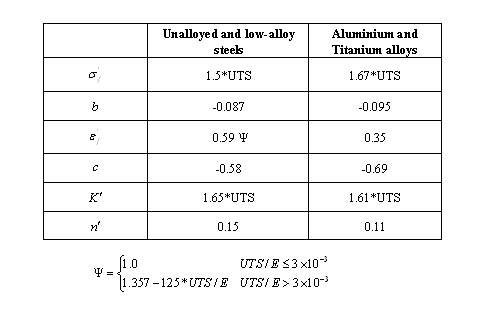
Figure 7. EN Method Description- Fatigue strength coefficient.
- Fatigue strength exponent.
- Fatigue ductility exponent.
- Fatigue ductility coefficient.
- Cyclic strain-hardening exponent.
- Cyclic strength coefficient.
- Reversal limit of endurance. One cycle contains two reversals.
- Standard Error of Log(N) from elastic strain.
- Standard Error of Log(N) from plastic strain.
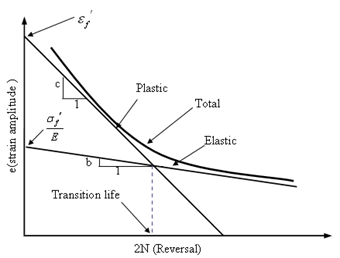
Figure 8. EN curve in log-log scale
Other Methods for Fitting a Curve
The following methods require certain parameters other than UTS to define the SN curve.
- From the Assign Material dialog, click the My Material tab and select your created material.
- Select an input method.
-
Define any necessary parameters.
Note: The images below use the default values as a guideline.
-
Click
 to view the model description.
to view the model description.
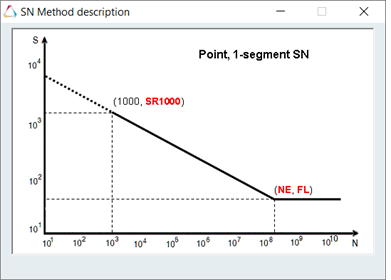
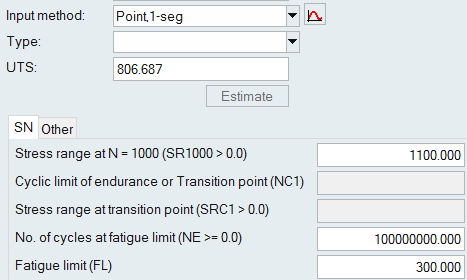 Figure 9.
Figure 9. 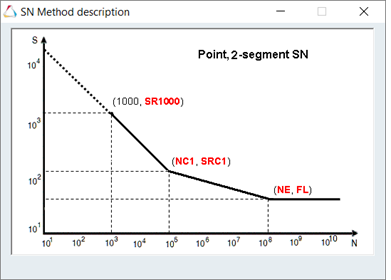
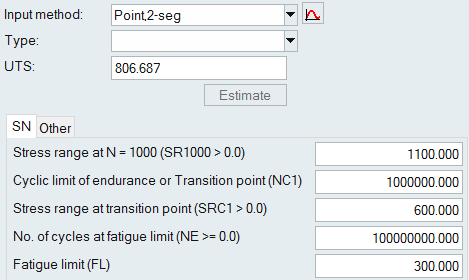 Figure 10.
Figure 10. 
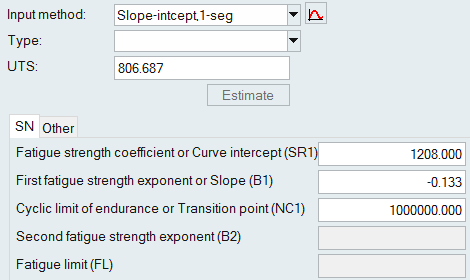 Figure 11.
Figure 11. 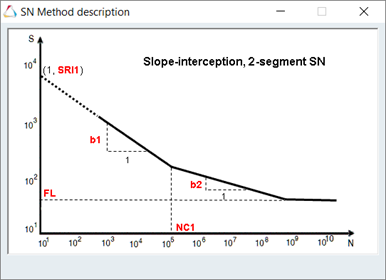
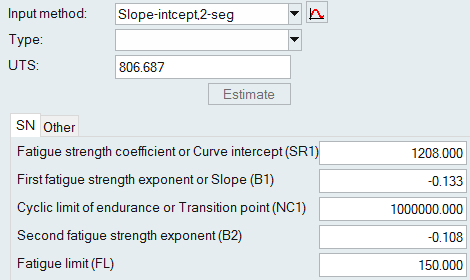 Figure 12.
Figure 12. 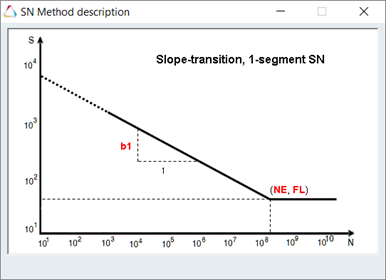
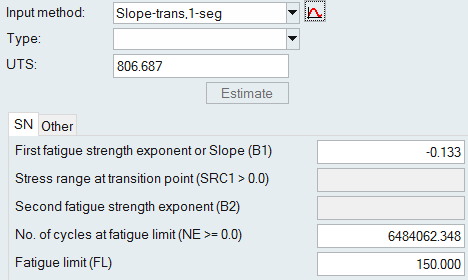 Figure 13.
Figure 13. 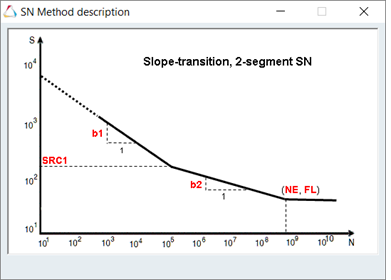
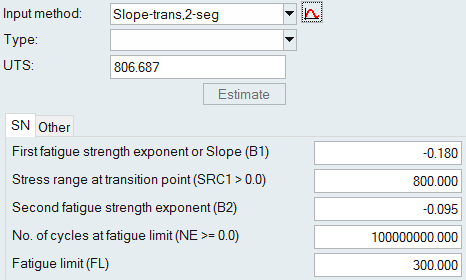 Figure 14.
Figure 14.